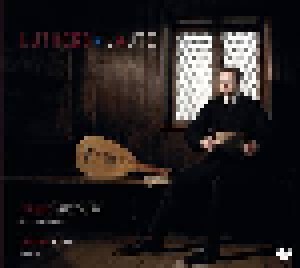Program: #16-29 Air Date: Jul 11, 2016
To listen to this show, you must first LOG IN. If you have already logged in, but you are still seeing this message, please SUBSCRIBE or UPGRADE your subscriber level today.
Lute repertoire inspired by Martin Luther; the Dresden Passion; and haunting music of the Thirty Years’ War.
I. Dresden Passion (Capella Sagittariana Dresden/Norbert Schuster). Rondeau CD ROP612122.
2. Tenebrae factae sunt, responsory
3. Die sieben Worte unsers lieben Erlösers und Seeligmachers Jesu Christi, for soloists, 5 instruments
4. Markus-Passion, for soloists & continuo
5. Salve mi Jesu, sacred concerto for soprano & continuo
6. O Jesu mi dulcissime, sacred concerto for 2 sopranos, alto, 2 violins, 2 violas da gamba & continuo
7. Kleine geistliche Konzerte (Little Sacred Concertos), for voices & continuo, SWV 282-337 (Opp. 8 & 9
8. Die sieben Worte unsers lieben Erlösers und Seeligmachers Jesu Christi, for soloists, 5 instruments
9. Kleine geistliche Konzerte (Little Sacred Concertos), for voices & continuo, SWV 282-337 (Opp. 8 & 9
10. Die sieben Worte unsers lieben Erlösers und Seeligmachers Jesu Christi, for soloists, 5 instruments
11. Kleine geistliche Konzerte (Little Sacred Concertos), for voices & continuo, SWV 282-337 (Opp. 8 & 9
12. Die sieben Worte unsers lieben Erlösers und Seeligmachers Jesu Christi, for soloists, 5 instruments
13. Cantiones Sacrae, motets (41) for 4 voices & continuo, SWV 53-93 (Op. 4)
14. Die sieben Worte unsers lieben Erlösers und Seeligmachers Jesu Christi, for soloists, 5 instruments
15. Da Jesus an dem Kreuze stund, sacred concerto for 2 sopranos & continuo
16. Cantional oder Gesangbuch Augspurgerischer Confession. hymns for 4-6 voices (2 editions)
17. Geistliches Seelen, Paradis und Lust-Gärtlein, for 5 or 6 voices & continuo
18. Die sieben Worte unsers lieben Erlösers und Seeligmachers Jesu Christi, for soloists, 5 instruments
19. Symphoniae Sacrae, Book 3, motets (21) for voices, instruments & continuo, SWV 398-418 (Op. 12)
II. Luthers Laute (Franz Vitzhum, countertenor/Julian Behr, lute). Christophorus CD CHR 77388.

Luther had an intimate relationship with the music of his time: he was an admirer of the works of Senfl, Finck and Josquin and wrote a number of melodies of his own. Luther's pastoral and almost intimate text "Frau Musica singt" (Ms. Musica Sings) to the nigthingale, makes one thing clear: music also provided Luther with solace and a place of refuge. At his own request, Martin Luther learnt to play the lute whilst suffering from an illness in 1503. He not only studied the lute, but also the technique of intabulation, which is the arrangement of a polyphonic vocal piece for the plucked instrument. The present selection of pieces by Luther and composers from his immediate environment, performed here by the countertenor Franz Vitzthum accompanied by the lute, could have been performed at an evening of domestic music-making at Martin Luther's house, although this cannot be proven by contemporary sources.
Ludwig Senfl: Non moriar, sed vivam,
Hans Newsidler (1508/09 - 1563) Ein seer guter Organistischer Preambel (Laute solo)
Anon. (Eisenacher Kantorenbuch): Surrexit Christus/Christ ist erstanden
Anon. (Codex Apel, um1500) / Heinrich Finck? Nigra sum, sed formosa
Hans Newsidler: Benedetur (Laute solo),
Hans Newsidler: Nunnentanz (Laute solo),
Arnolt Schlick: Maria zart,
Claude Goudimel: Etans assis aux rives aquatiques (Ps. 137),
Thomas Ravenscroft: O sing ye now unto the Lord (Ps. 98)
Ludwig Senfl: In pace inidipsum,
Martin Luther: Ein neues Lied wir heben an,
Ludwig Senfl: Ecce quam bonum,
III. Buxtehude and His Circle (Theatre of Voices/Paul Hillier). Da Capo CD 6.220634.

One strong characteristic of Buxtehude was his unique ability to form net-works around himself. Both in Elsinore and in Lübeck he quickly forged close contacts with the most influential burghers and merchants of the towns, who could help with contacts and funding for the realization of his ambitious projects. Buxte-hude had a wide-ranging network of colleagues, just as he himself had come from a large northern German and Scandinavian circle of composers and musicians.
The idea behind this programme has been to provide insight into the circle around Buxtehude – a circle of time, place and personal relations; a network of composers from northern German musician families, all of whom worked in or migrated to Scandinavia in the course of the 1600s, and left their mark on the musical life of the Baltic region in cities like Danzig, Lübeck, Hamburg, Elsinore, Copenhagen, Gothenburg and Stockholm.
At first glance it might seem that these composers had little to do with one another, partly because our knowledge of many of them is relatively limited. But on closer scrutiny a pattern of friendships, teacher-pupil relationships and even family memberships emerges: Diderich Buxtehude married Frans Tunder’s daughter; Nico-laus Bruhns’ father, Paul Bruhns, was a pupil of Franz Tunder; and his uncle Peter Bruhns was Buxtehude’s regular violinist for many years. Nicolaus Bruhns was a pupil of Buxtehude, and Buxtehude himself was a pupil of Kaspar Förster and of the organist Johann Lorentz, whose position Christian Geist took over in Copenhagen. This circle is one of the closest one can draw around Buxtehude, and it could also have included composers like Johann Theile, Johann Adam Reincken, Johann Lorentz, Gustav Düben, Christoph Bernhard and Matthias Weckmann.
Composer Info
Marco Gioseppe Peranda (~1625 - 1675), Martin Luther,Ludwig Senfl, Josquin de Prez , Hans Newsidler (1508/09 - 1563), Arnolt Schlick, Claude Goudimel, Thomas Ravenscroft, Raitis Grigalis (*1975) , Christian Geist (c.1650-1711), Dietrich Buxtehude (c.1637-1707), Nicolas Bruhns (1665-1697) , Franz Tunder (1614-1667), Kaspar Förster (1616-1673)
CD Info
CD ROP612122, CD CHR 77388, Da Capo CD 6.220634
